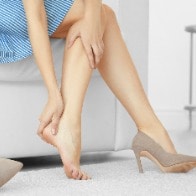How to Treat Bunions: Finding Relief and Taking Steps Towards Comfort
Dealing with bunions can be a real pain – quite literally. If you’re among the many individuals struggling with bunions, you understand the discomfort, frustration, and limitations they can bring to your daily life. Those pesky bony bumps that form at the base of your big toe or pinky toe can make even simple tasks like walking or wearing your favorite shoes a daunting challenge. But fear not! In this blog, we’ll delve into the ins and outs of how to treat bunions, offering you effective solutions and insights to help you step forward towards relief and comfort.
Understanding the Bunion Conundrum
Bunions, medically known as hallux valgus, are a common foot condition that can lead to pain, inflammation, and altered foot structure. They typically develop when the joint at the base of your big toe becomes misaligned, causing the toe to lean towards the other toes and the joint to protrude. This misalignment can be caused by factors such as genetics, improper footwear, and certain medical conditions. The friction from shoes and the pressure of walking can aggravate bunions, exacerbating the pain and discomfort.
Choosing the Right Footwear
Treating bunions starts with your choice of footwear. Opting for comfortable and supportive shoes is paramount. Look for footwear with a wide toe box that allows your toes to spread naturally without crowding. High heels and shoes with narrow, pointy toe boxes should be avoided as they can worsen bunion pain by putting extra pressure on the affected area. Choose shoes made from soft, breathable materials to reduce friction and irritation.
Embrace Orthotics
Custom or over-the-counter orthotic inserts can provide immense relief for bunion discomfort. These inserts help realign your foot and reduce pressure on the bunion, which can alleviate pain and slow down the progression of the condition. Consult a podiatrist to determine the best orthotic solution for your specific needs.
Exercise and Stretching
Engaging in specific exercises and stretches can play a crucial role in managing bunion discomfort. Toe stretches, foot rolling, and calf stretches can help improve flexibility and strengthen the muscles that support your feet. Regular stretching can help prevent further deformity and alleviate some of the pain associated with bunions.
Cold Compress and Medications
When bunion pain flares up, using a cold compress can provide immediate relief by reducing inflammation. Over-the-counter pain relievers and anti-inflammatory medications can also be helpful in managing acute discomfort. However, consult your healthcare provider before starting any medication regimen.
Explore Non-Invasive Treatments
If conservative approaches don’t provide the desired relief, you might consider non-invasive treatments such as ultrasound therapy or bunion splints. These methods can help improve blood circulation, reduce inflammation, and slow down the progression of the condition.
Conclusion
Bunions may be a common challenge, but they’re not a life sentence. By knowing how to treat bunions effectively, you can regain control over your comfort and mobility. Remember, it’s important to consult a podiatrist for personalized advice and treatment plans tailored to your unique needs. With the right approach, you can alleviate bunion pain, prevent further complications, and continue enjoying an active and pain-free life. Don’t let bunions hold you back – take the first step towards relief today!
To receive personalized guidance and treatment for bunion pain, book an appointment with us today!








